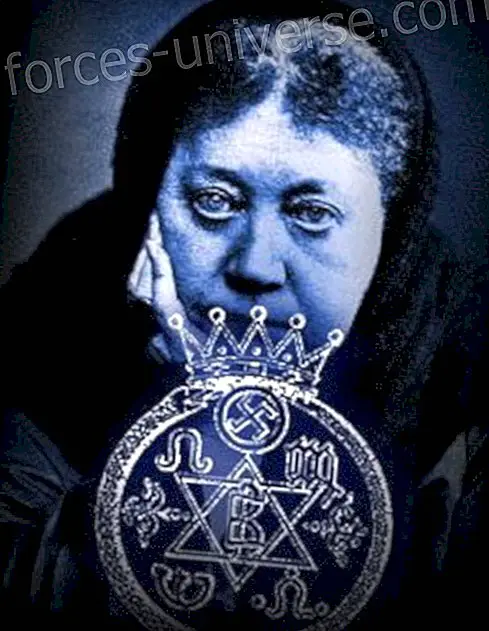Fractal Systems: A brief description of Complex Emerging and Adaptive Systems, by Peter Fryer and Jules Ruis
- 2019

“The Universe is a fractal. Whatever the energy seal we carry, it will be repeated infinitely, again and again, until we change that vibration. ”
- Paige Bartholomew
What are fractal systems ?
A brief description of ' Emerging and Adaptive Complex Systems '
By Peter Fryer and Jules Ruis
Translated into Spanish by Lucas RC
Introduction
In science, we introduce ' fractality ' as a saint and signal for a new way of thinking about the collective behavior of many basic but interactive units, be they atoms, molecules, neurons or bits in a computer. To be more precise, our definition is that fractality is the study of the behavior of macroscopic collections of those units that are endowed with the potential to evolve over time. Their interaction leads to coherent collective phenomena, known as emergent properties that can be described only at a higher level than those of individual units. In that sense, the whole is greater than the sum of its parts.
Definition of a Fractal System
A Fractal System is a complex non-linear interactive system that has the ability to adapt to a changing environment. These systems are characterized by the potential for self-organization, existing in an unbalanced environment. Fractal systems evolve by random mutations, self-organization, the transformation of their internal environment models and natural selection. Examples include living organisms, the nervous system, the immune system, the economy, corporations, societies and others.
In a fractal system, semi-autonomous agents interact according to specific interaction rules, evolving to maximize some measure, such as health. These agents are diverse both in form and in their capacity and adapt by changing their rules and, therefore, their behaviors, as they gain experience. Fractal systems evolve historically, that is, from their past or history. For example, their experience is added to them and determines their future trajectory. Its adaptability can be both increased and decreased by the rules that shape its interaction. In addition, not in advance, emerging structures can play a decisive role in the evolution of these systems, which makes these systems present a high degree of unpredictability.
However, it can also be that one of the fractal systems has the potential for a high degree of creativity that was not programmed in them from the beginning. Considering an organization, for example a hospital, it modifies as a fractal system the way in which change is promulgated. For example, change can be understood as a type of self-organization resulting from intensifying interconnectivity as well as the connection with the environment, the cultivation of diversity in the views of the members organizational, and experiment with alternative rules and structures.
Cause and effect
For many years, scientists have seen the universe as a linear place. A place where simple rules of cause and effect apply. They saw the universe as a large machine and thought that if they could divide this machine and understand its parts, they could understand the whole.
They also thought that the components of the universe could be seen as machines, believing that if we worked on the parts of those components and improved the way these parts work, the whole work Better. Scientists believed that the universe and everything in it could be predicted and controlled . But despite the hard attempts to find the missing components that completed the image, they failed.
Despite using the world's most powerful computers, the weather remained unpredictable, despite intensive study and analysis, the ecosystems and the immune system did not behave as expected. But it was in the field of quantum physics that the strangest discoveries were made and that it was apparent that the smallest subnuclear particles behaved in according to a set of very different rules of cause and effect.

Fractal Theory
Gradually as scholars from all disciplines explored this phenomenon, a new theory emerged - the Fractal Theory, a theory based on relationships, emergence, patterns and repetitions. A theory that holds that the universe is full of systems, weather systems, immune systems, social systems, etc. and that these systems are complex and are constantly adapting to the environment. That is, fractal systems .
Complex Adaptive Systems
This can be illustrated as in the following diagram:

Agents in the system are all components of that system. For example, the air and water molecules in the meteorological system, and the flora and fauna in an ecosystem. These agents interact and connect with each other in unpredictable and unplanned ways. But from this amount of regularity in the interactions emerges and a pattern begins to form that feeds the system and informs the interactions to the agents. For example in an ecosystem, if a virus begins to deplete a species, this is the result of more or less food supplements for others in the system, which will affect its behavior and numbers. A period of flow occurs in all populations in the system until a new balance is established.
For clarity, in the diagram on the regularities, the pattern and the feedback are shown outside the system but in reality they are all intrinsic parts to it.
Properties
Fractal systems have several properties, and the most important are:
Emergency
Before being planned or controlled, agents in the system interact seemingly in a random manner. From all these interactions emerge patterns, those that inform the behavior of agents within the system, and the behavior of the system itself. For example, a hill of termites is a wonderful piece of architecture with a maze of interconnected passages, large caverns, ventilation tunnels and much more. However, there is no great plan, the hills only emerge as a result of the follow-up of a few simple local rules by termites.

Co-evolution
All systems exist within their own environment and are also part of that environment. Therefore, while the environment changes, they need to change to ensure better fitness . But because they are part of the environment, when they change, they also modify the environment, and as it has changed they need to be readjusted and thus continue in a constant process (perhaps Darwin's theory it should be called Co-Evolution Theory ).
Some people point out the distinction between complex adaptive systems and complex evolutionary systems . Where the former adapt to the changes around them but do not learn from the process. And the latter learn and evolve from each change, allowing them an influence on their environment, a more accurate prediction of future changes, and prepares them for them. Fractal systems are both adaptive and evolutionary.
Sub-optimal
Fractal systems do not need to be perfect to thrive within their environment. They should only be slightly better than their competitors and any energy used to be more than that is wasted energy. A fractal system, once it has reached the state of being good enough, will exchange its great effectiveness for increasing efficiency.
Variety of Requirements
The greater the variety within the system, the greater its strength. In fact, ambiguity and paradox abound in fractal systems, which uses their contradictions to create new possibilities to co-evolve with their environment .
Democracy is an example in which its strength derives from its tolerance and even insistence on a variety of political perspectives.
Connectivity
The ways in which the agents of a system connect and interact with each other is critical for the survival of the system, since it is from these connections that patterns are formed and feedback is disseminated. The relationships between the agents are generally more important than the agents themselves.
Simple Rules
Fractal systems are not complicated. Emerging patterns may have a very rich variety, but as a kaleidoscope these rules that govern the functions of the system are quite simple. A classic example is that all the world's water systems, all streams, rivers, lakes, oceans, waterfalls, etc. With their infinite beauty, power and variety they are governed by the simple principle that water meets its own level.
Repetition
Small changes in the initial conditions of the system can have significant effects after they go through the emergency cycle - feedback sometimes (phenomenon sometimes referred to as the butterfly effect ). A snowball that rolls, for example, wins with each turn greater volume of snow than it had in the previous turn, and quickly a snowball the size of a fist becomes a giant.

Self Organizing
There is no hierarchy of command and control in a fractal system. There is no planning or administration, but there is a constant reorganization to find the best aptitude for the environment . A classic example is that if we went to any town in the east, we would add all the food from the markets and divide it by the inhabitants of the town, there would be enough food to supply everyone for about two weeks, but there is no food plan or administration, or some other type of formal control process. The system continuously organizes itself through the emergency and feedback process .
To the limit of Chaos
Fractal theory is not the same as chaos theory that derives from mathematics. But chaos takes place in fractal theory, in which systems exist in a spectrum that moves between equilibrium and chaos . A system in equilibrium does not possess the internal dynamics to allow itself to respond to its environment and very slowly (or quickly) it will die. A system in chaos ceases to function as a system. The most productive state to meet will be at the limit of chaos where it meets maximum variety and creativity, leading to new possibilities.
Nested Systems
Most systems are nested within other systems and many systems are made of small systems. If we take the example of self-organization above and consider a food market, that market is in turn a system with its own products, customers, suppliers and neighbors. In turn, it belongs to the food system that corresponds to that town and to the major food system that corresponds to that country, and probably many more. Therefore, it is part of many systems, most of which are in turn part of larger ones.
conclusion
Fractal systems are all around us. Most of the things we take for granted are fractal systems, and the agents of each system exist and behave with total ignorance of that concept, but that does not prevent them from contributing to the system . Fractal systems are a model of thinking about the world around us and a model to predict what could happen.
Eindhoven, June 18, 2004.
TRANSLATION: Lucas, editor and translator of the great family of hermandadblanca.org
ORIGINAL: http://www.fractal.org/Bewustzijns-Besturings-Model/Fractal-systems.htm






